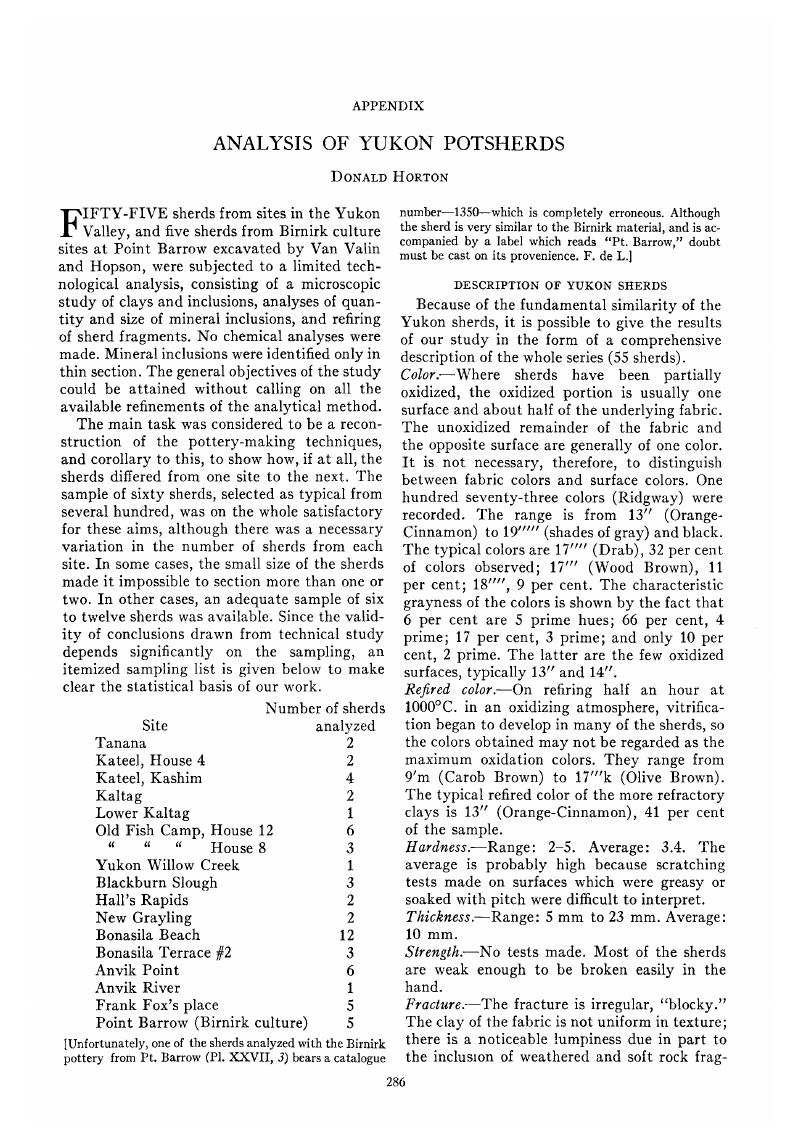No CrossRef data available.
Published online by Cambridge University Press: 27 June 2018

1 Collins, 1937 a, p. 167.
2 These include one sherd of doubtful provenience.
3 This sherd is of uncertain provenience and age.
4 See p. 141. 5 Collins, 1937 a, loc. cit. We cannot agree with Collins (p. 167) that the dark color of the sherds is due to an original black clay, little fired. Dr. de Laguna's informants, for instance, refer to blue and white clays used in pot making, although the Yukon sherds are generally dark if not black on at least one side and part of the core. Blackening is here due undoubtedly to firing in a smoky reducing atmosphere and perhaps to the addition of blood or grease (which seems to have been a characteristic trait of the pot-making technique in this area). The slight oxidation of the surfaces mentioned by Collins may be produced by exposure of the pot to the atmosphere before it has cooled or by accidental drafts during the firing or even possibly by subsequent exposure to an oxidizing atmosphere in the cooking fire.